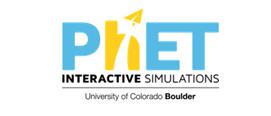Formulae and equations
This topic brings together some of the ideas that will allow students to make sense of the substances they will use in practical work and calculations they may make as part of the T level course. Students often find it difficult to picture the abstract concepts involved and it helps to give models (including mathematical relationships) to make sense of what they are seeing or using. It is probably helpful to use the diagnostic questions to identify what students may already think from other key stages, and then build on this with simulations and practice activities to look at relevant examples of where we would see that concept in action. It may also be helpful to look through other part of the qualification to identify links to where calculations are used again e.g. concentration when looking at serial dilutions or titrations and make these explicit to students as it is taught.
Whilst this list provides a source of information and ideas for experimental work, it is important to note that recommendations can date very quickly. Do NOT follow suggestions which conflict with current advice from CLEAPSS, SSERC or other recent safety guides. eLibrary users are responsible for ensuring that any activity, including practical work, which they carry out is consistent with current regulations related to Health and Safety and that they carry an appropriate risk assessment. Further information is provided in our Health and Safety guidance.
Symbols and Formulae
These excellent BEST (Best Evidence Science Teaching) resources focus on diagnostic questions and then response activities for the topic of symbols and formulae. Answers and information on the research behind the misconceptions is also included to allow teachers to understand the background. Although they are aimed at KS3, they are still relevant to investigate any lingering misconceptions and so they are useful as short starters for discussion on what students already know.
Representing Reactions
These BEST (Best Evidence Science Teaching) resources focus on diagnostic questions and then response activities for the topic of reactions and equations that show these. Although they are aimed at KS3, they are still relevant to investigate any lingering misconceptions on this topic. The resources here are short and useful starters to develop student thinking and discussion around the topic.
What are atoms and isotopes?
This is a short, but helpful, video that looks at what we mean by an atom and an isotope and models what they might look like. It would make a good starter to the topic and students could pick out what mistakes are made by members of the public in their own explanations at the start before looking at different examples in class.
Concentration
This simulation helps to students to gain a conceptual understanding of what is happening inside a solution when factors like the numbers of particle of solute change. It may also help to give a focus for what they need to change, perhaps in a step by step format at first e.g. add the drink mix, what happens to the concentration in mol/l as you add it? What happens when the solution is saturated?'. It could then be used when looking at real life examples of the solutions to explain the difference between them e.g. 1M and 2M hydrochloric acid.
Disinfectant Concentration and Effectiveness
This is an application of the idea of concentration, looking at data from an experiment changing the concentration of disinfectant. It could be used as a homework or follow-up activity to link the ideas about infection control to this topic and even health and safety procedures in the workplace that may detail which disinfectant to use.
Isotopes and atomic mass simulation
This simulation allows students to investigate the effect of adding neutrons to the structure of existing atoms. You can see the change in mass, whether it is now unstable and how abundant that isotope is in nature. There is also an option to look at mixtures of isotopes and their typical composition. Students could generate or be given a set of questions to think about while using the simulation, such as 'Which elements have stable isotopes?' , they could then use a periodic table and use a key to annotate it.
Polyatomic ions
Although this content is beyond what students need in the specification, it may help some science pathway students to be able to see what substances contain and what the chemical names are referring to. Perhaps laminate the sheet to go out with practical work or have the infographic at the front of student folders for reference.
SI units: The Mole
Some background information for teachers from the National Physical Laboratory on the SI unit of the mole (mol). This could be used to get an official definition, ideas how scientists use the mole and where research in this area is going, plus 'did you know' facts to use in teaching.




